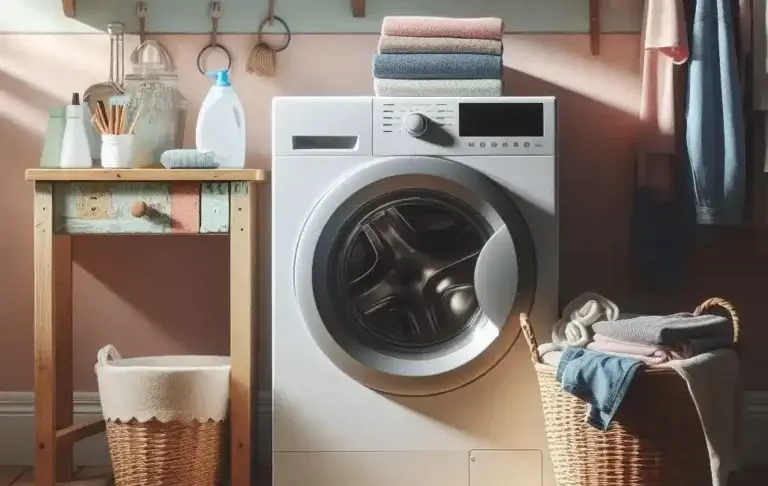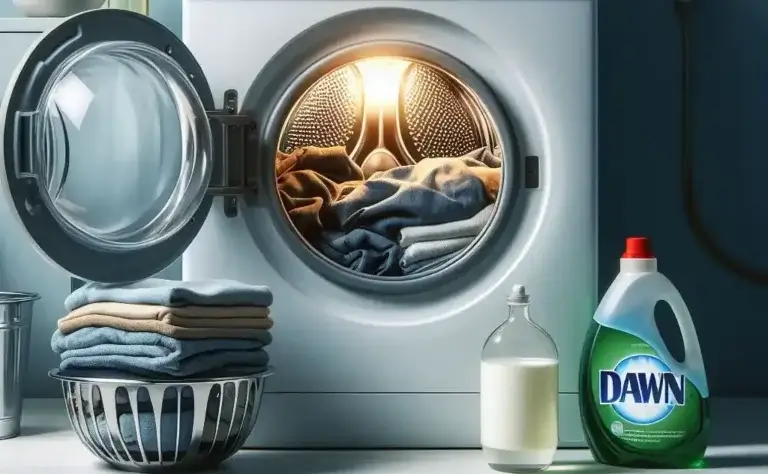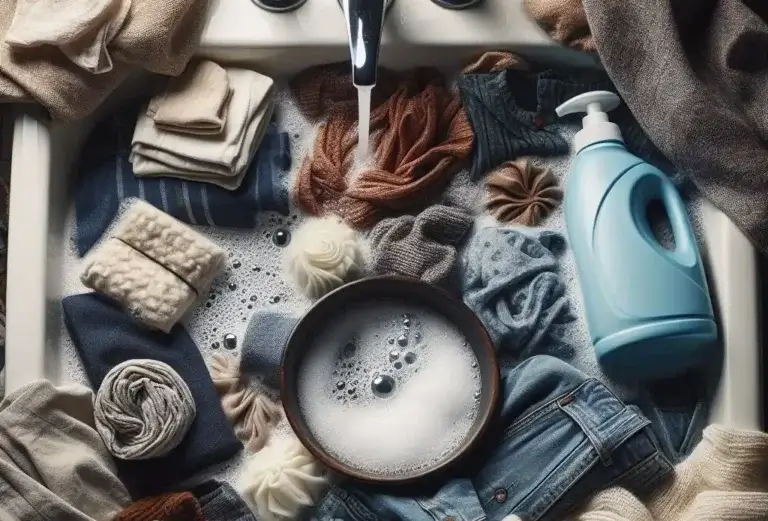Can You Do Laundry When It’s Cold Outside? How Extreme Cold Temperatures and Freezing Weather Affect Your Appliances
Doing laundry in extreme cold temperatures or freezing weather is possible, but it does come with some risks and extra precautions you need to take. Extreme cold can affect appliances like your washing machine, dryer, pipes, and more. As Old Man Winter really settles in, you’ll need to adjust how you do laundry and take steps to prevent issues with your appliances.
In this comprehensive guide, we’ll cover whether can you do laundry when it’s cold outside and everything you need to know about doing laundry and using home appliances when it’s extremely cold or freezing outside, including:
- How Extreme Cold Temperatures Affect Home Appliances
- Steps to Protect Appliances From Freezing
- Can You Run Your Washer in Cold Weather, or will it cause the water intake valve to break?
- Drying Clothes Outside in Freezing Cold
- How to Dry Clothes Inside During Freezing Weather
- Winterizing Washers, Dryers, and Utility Rooms
- Preventing Frozen Pipes in Extreme Cold
- Adjusting Laundry Habits for cooler weather by using the basement or garage to fill the tub and drain the water safely.
If the frigid temperatures have you wondering if you can safely use your washer, dryer, and other appliances, read on. We have pro tips for adapting your laundry routine for cold and freezing weather so you can keep your clothes clean all winter long.
Table of Contents
How Extreme Cold Temperatures Affect Home Appliances
Most modern home appliances like washers, dryers, dishwashers, refrigerators, HVAC systems, and more are designed to operate in normal winter weather. However, extremely cold temperatures and freezing weather can push appliances past what they are built to handle.
Several key issues can crop up when home appliances are exposed to unusually cold conditions:
- Frozen pipes and water lines: When temperatures dip below freezing, water lines and pipes throughout your home are vulnerable. Prolonged exposure to freezing temperatures can cause pipes to freeze and burst.
- Damage to valves and pumps: Appliances connected to water lines rely on intake valves and water pumps. Extreme cold can cause this hardware to malfunction or break entirely. A broken valve or pump will leak water, leading to flooding, corrosion damage, mold, and more issues.
- Garages and basements dropping below freezing: Many homeowners keep appliances like second fridges/freezers, washer/dryer units, and HVAC systems in uninsulated garages or basements. If these spaces get extremely cold, the appliances inside can freeze up and fail to operate properly.
- Sitting in snow or ice: Outdoor elements like heavy snow or ice storms pose hazards for appliances located outside the home. Air conditioner condenser fans, HVAC heat pumps, and dryer vents need to remain clear of snow and ice buildup so they don’t get damaged.
- Overworking emergency heat: In extremely low temperatures, your HVAC system may rely solely on emergency electric heat strips. Running these laundry devices for a long period of time leads to high energy bills and may cause the water intake valve to break.
The biggest concern when it comes to laundry appliances is that extremely cold temperatures can damage water lines, valves, pumps or seals. Any small crack or rupture will cause water to leak out when the machine tries to fill. Water damage can be catastrophic for your home if left unaddressed.
Additionally, washers and dryers may simply not run as designed if garage or basement temperatures drop below freezing.
Steps to Protect Appliances From Freezing
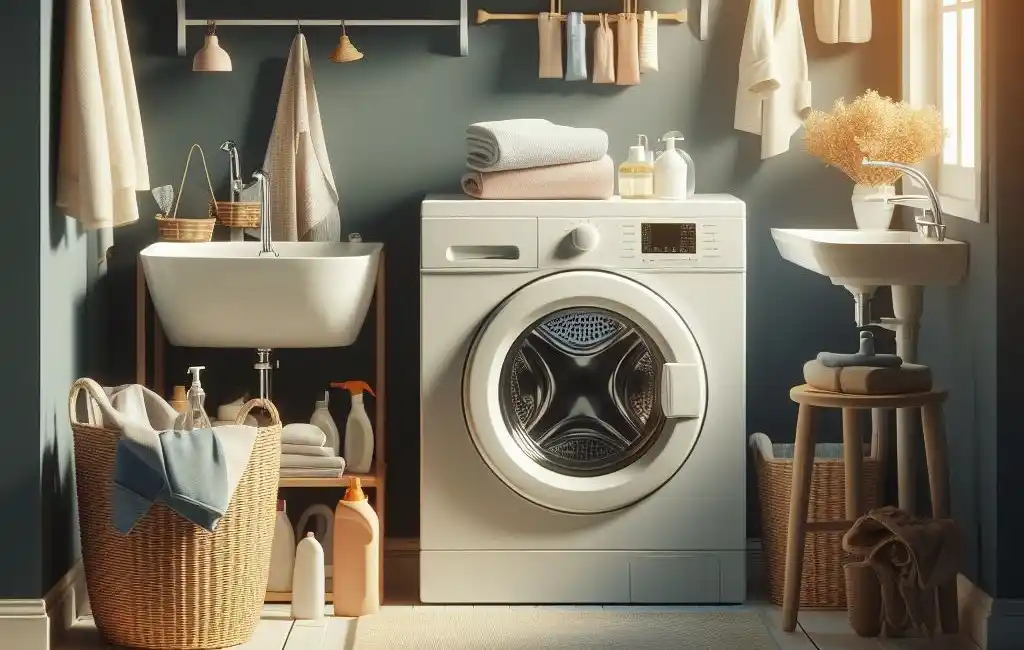
Luckily there are several steps you can take to help prevent freezing temps from taking their toll on home appliances:
- Maintain heat above 55oF: For any appliances located in spaces like garages and basements, maintain temperatures above 55oF even when it’s extremely cold outside. Consider adding space heaters if your existing HVAC cannot keep these areas warm enough. Never let indoor temps dip below freezing when appliances are present.
- Insulate pipes, hoses and lines: Fully insulate any water pipes, appliance hoses, condenser drain lines or other water lines that are vulnerable to freezing. This protects key connection points and reduces the chance of ice blockages.
- Open indoor cabinet doors: If you have a second refrigerator/freezer in the garage or basement, ensure doors remain slightly ajar during cold snaps. This allows warmer indoor air to circulate and prevents freezing up.
- Check appliance seals/gaskets: Make sure all appliances have tight door seals and gaskets so the warm air stays inside. Especially check older units as the gaskets can become loose over time.
- Keep vents clear: Outdoor condenser units require open airflow to operate safely. After snowstorms, clear snow and ice buildup from around AC compressors, heat pump vents, dryer vents, etc. Make sure they are completely in the clear.
- Run a freeze prevention cycle: Some washers have a special cycle you can run to remove residual water after use, preventing freezing in hoses or valves. Check your washer’s manual to see if this option is available.
- Shut off and drain water lines: For appliances on water lines that you won’t use for an extended time, shut off the water valves. Then disconnect hoses and run the appliance to drain out any remaining water before extreme cold hits.
If you take preventative action and appliances are designed to handle regular winter weather, they should continue operating safely even when temperatures take a deep dive. But unusual cold snaps call for extra precautions.
Can You Run Your Washer in Cold Weather?
Similar to an ice maker, washing machines are designed for operation down to temperatures around 35-40oF. This threshold accounts for most winter weather conditions in the majority of regions. However, when the mercury drops below freezing for long periods of time, special care is required to prevent issues.
Letting the temperature get too cold in the room where your washing machine is located poses a few key risks:
- The water intake valve can freeze up and fail to open when needed
- Residual water left in the hoses or inside the unit can freeze, causing damage
- Ice can block proper drainage, leaving excess water sitting inside the washer drum or base
Additionally, washers in cold basements may simply refuse to start if ambient temperatures drop below 35oF or so. The computerized control module will not allow operation to protect components.
Here are tips on safely running your washing machine when temperatures plummet:
- Maintain heat above 40: Do whatever is necessary to keep the laundry room or area above 40 degrees when freezing conditions hit. Run space heaters if the existing HVAC does not maintain adequate warmth.
- Insulate back and sides: If the washer sits against a poorly insulated exterior wall, add insulation to buffer from the cold as much as possible. Protecting the back and sides helps components stay warmer.
- Leave hoses attached: Disconnecting inlet hoses when not in use seems logical, but doing so exposes water left inside to freezing. Leaving hoses connected keeps that water warmer in the basement heat.
- Run an empty cycle first: Before adding clothes, run an empty rinse cycle. This ensures any ice blockages are cleared and the drum gets warmed up. Check for odd sounds or excess water.
- Consider pipe insulation: Check that water supply pipes are properly insulated. It only takes a small exposed section to allow below-freezing air contact and cause issues.
- Dry drum interior after use to prevent water damage as a result of moisture accumulation. With freezing weather in the forecast, run an extra spin cycle after washing to remove as much interior water as possible. Lingering puddles left overnight pose a freezing risk. Leaving the door open also allows air circulation inside to help evaporate any remaining moisture faster.
In extreme cold, the ultimate safe approach is hauling laundry upstairs to run cycles in the warmth of your living space rather than the chilly basement. But if that won’t work, maintaining above-freezing garage/basement temperatures and taking preventative measures will allow safe operation of your cold-weather washer.
Drying Clothes Outside in Freezing Cold
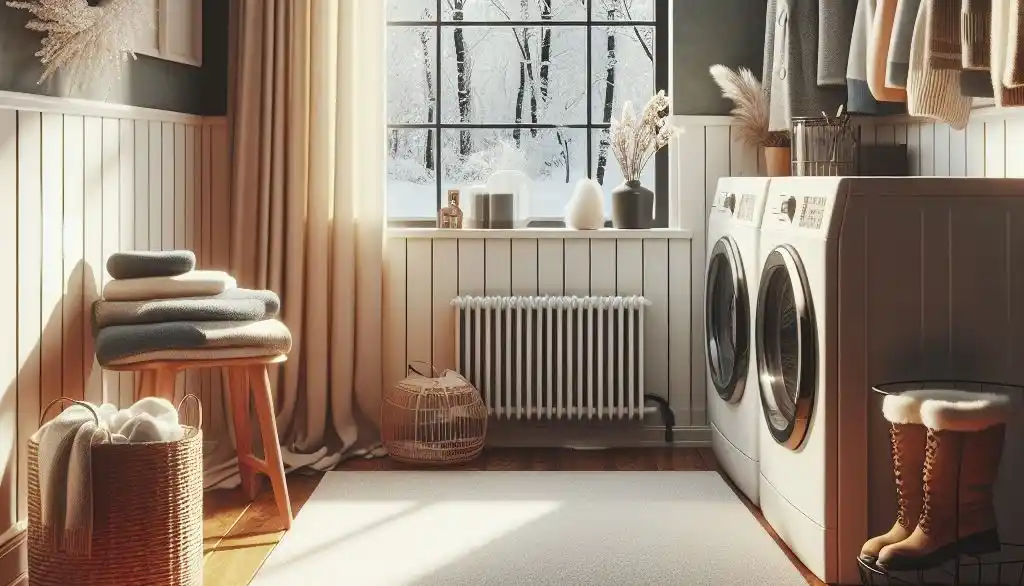
Drying laundry outdoors year-round – even in frigid winter – is possible, though more challenging. While indoor drying with a vented clothes dryer is always easiest for cold weather, utilizing outdoor lines does have advantages like:
- Free Solar Power – No utility or gas costs
- Gentler on Fabrics – Less wear-and-tear vs machine heat
- Fresh Scent – Linens smell extra clean from the fresh air
- Eco-Friendly – Lower environmental impact
However, successful winter clothesline drying requires paying attention to a few key factors:
Temperature Threshold
Most natural fibers like cotton and linen will slowly air dry even below freezing, given enough time. But temperatures colder than 25°F dramatically slow the evaporation process.
If outdoor conditions drop into the teens or single digits, even over an entire day drying will be minimal. Bring delicate items inside below 25°F to prevent fabric damage from freezing while wet.
Proper Line Setup
Rope or wire lines must be fully exposed to wind in order to work. Avoid sheltered areas on enclosed porches or right up against buildings.
Use as long a run of line as possible to maximize space for multiple loads even when hanging bulky things like sheets and blankets.
Make lines accessible, so it’s not hazardous to reach them across icy ground, similar to your ice maker. Keep a clear path shoveled out like the way you would clear ice around your ice maker.
Wind Exposure & Circulation
Position the drying line to have maximum wind flow for your geographic location. Cross breezes are best to fully circulate air around clothing items so the moisture can evaporate from all sides, helping to dry the clothes.
Avoid “wind tunnels” between buildings that blast one concentrated area. This may rip laundry off the line if not secured well enough.
Thickness & Absorbency
The thicker and more absorbent fabric is, the longer outdoor freeze-drying takes. Delicates and skinnier items like t-shirts and underwear will dry fastest.
Stick to warmer days for bulky loads like jeans, sweaters, towels, and blankets to prevent water damage as a result of freezing.
Rotate items occasionally so a different surface gets wind exposure. Frequently check for icy spots indicating moisture left.
Weight Distribution
Don’t overload lines with too much-wet laundry. Water-saturated clothing will freeze into rigid sheets rather than blow freely. Stagger clothespins widely to prevent this.
Aim to loosely drape items over the line, leaving ample space for air to fully circulate through each piece. Tight clumping defeats the purpose.
Additional Drying Indoors
When hanging laundry below 25°F outside, assume it will not fully dry, even over 24 hours or more.
Plan to finish thicker items draped over indoor drying racks, space heaters or wood stoves to complete evaporation before wearing or storing away.
Remove slightly stiff clothing inside to allow it to soften up to normal flexibility before folding.
How to Dry Clothes Inside During Freezing Weather
Using an electric or gas dryer indoors is the simplest approach to drying laundry in winter. However, dryer overuse carries some downsides to consider:
- Higher utility bills
- Excess wear on fabrics
- Lint residue on clothes
- Indoor humidity and condensation issues
Here are tips for indoor drying using methods beyond just running the dryer nonstop when it’s too cold out.
Use an Indoor Drying Rack
Open-frame drying racks allow clothes to air dry indoors by neatly suspending them in space. Position racks safely away from stoves, heaters or candles to prevent fire risk. Place an absorptive cloth under racks to catch drips.
Help speed evaporation by pointing a circulating fan towards clothing. Rotating items halfway through allows both sides to dry. Thicker pieces like sweaters may require repositioning multiple times.
If indoor humidity is high, run a dehumidifier to help pull moisture from the air and your laundry.
Take Advantage of Existing Heat Sources
hang or lay especially delicate items over space heaters or heating vents for quick yet gentle drying with ambient warmth. Don’t let fabrics actually touch heat sources.
Wood stoves with advanced catalytic converters operate at safe temperatures for carefully laying garments over surrounding metal surfaces. Constantly monitor and avoid contact with stove doors or the stovepipe itself.
Gas oven doors left slightly ajar after baking also emanate low-level warmth perfect for draping intimates nearby. Just ensure oven controls are off and use caution around the hot interior.
Try a laundry-drying cabinet
All-in-one laundry drying cabinets provide an enclosed, vented space offering major advantages:
- Safely contain heat and moisture
- Speed drying with fans
- Allow household activities during cycles
- An optional humidity sensor can prevent over-drying and potential water damage as a result.
Many models include heating elements, offering similarities to dryer performance. For energy efficiency, some are passive and rely solely on interior airflow.
While more of an investment, drying cabinets are a versatile addition to year-round laundry.
Winterizing Washers, Dryers, and Utility Rooms
Preparing your laundry appliances and the spaces they occupy before extreme cold and winter storms hit goes a long way in preventing issues. Here are key tips for seasonal winterization:
Washer Maintenance
- Drain the water from supply hoses when not in use to prevent freezing.
- Clean interior drum and door seals thoroughly
- Run a short empty cycle to clear residual water
- Leave the door open to allow internal air circulation
- Disconnect and drain water hookups if extended vacancy
Dryer Maintenance
- Clear lint trap and duct exhaust line
- Clean drum interior and door seals
- Check the vent hood outside for bird nests/debris
- Ensure garage/basement temps stay above freezing
- For long vacations, shut off the gas/electric supply
Utility Room Winterization
- Repair broken windows or door seals
- Insulate water supply pipes
- Install pipe heat tape if prone to freezing
- Place thermometers to monitor ambient temp
- Ensure heat supplies reach this room
- Add portable space heater on auxiliary power if needed
Preventing Frozen Pipes in Extreme Cold
Household water pipes exposed to freezing conditions pose a lot of risk for catastrophic flooding and water damage when they thaw. Areas most prone to frozen pipes:
- Crawl spaces under houses
- Spaces under sinks on exterior walls
- Uninsulated attics
- Garages and unheated basements
Here are tips to keep pipes safely above freezing:
- Maintain Heat Above 55oF – Wherever pipes run through unheated areas of the home, keep ambient temperatures above 55 degrees, even when it’s brutally cold outside.
- Insulate Pipes – Applying pipe sleeve insulation or heat tape along the full length exposed to freezing conditions keeps the temperature of the water inside above 32°F.
- Seal Air Leaks – Cracks and gaps in exterior walls, doors or windows allow frigid outside air to penetrate and chill pipes. Seal any breaches.
- Let Faucets Drip – Keeping sink faucets slightly open so they drip constantly maintains water flow and pressure during extreme cold.
- Consider Freeze Prevention Valves – Newer freeze prevention valves automatically drain pipes through faucets when ambient air drops below a set temperature threshold, before ice can form.
With vigilance to maintain heat everywhere and insulate vulnerable spots, you can keep pipes from freezing even during bitter-cold winter weather.
Adjusting Laundry Habits for Colder Weather
Doing laundry through the winter does require adjusting certain habits you may have during warmer months:
- Run full loads rather than smaller ones to maximize efficiency.
- Wash clothes in cold water to conserve hot water for other househild needs.
- Clean the lint trap before each dryer load as cold air causes more lint production.
- Vent dryers inside your basement or garage, instead of exposing ducts to freezing cold outside.
- Hang delicates inside to dry rather than risk freezing damage on outdoor lines.
- Check that the laundry soap or detergent used doesn’t lose efficacy in very cold water. Some all-natural varieties have this issue.
- Prevent musty washer smells by leaving the door open between uses so the interior can completely dry out.
- Fix any minor water leaks quickly before small puddles have a chance to freeze over.
Remaining vigilant with your laundry appliances and laundry room conditions will ensure you can safely and effectively keep your clothes clean no matter how cold it gets. Monitor ambient temperatures, look for any dripping or pooling water, and adjust wash routines to account for heavier usage in winter.
In Closing
Freezing winter conditions demand extra preparation when operating home appliances like washers, dryers, and more. However, taking prudent preventative measures allows you to continue using them safely. Maintain adequate warmth everywhere, diligently seal off outside air intrusion, and winterize key components like pipes ahead of extreme cold.
Monitor laundry appliances closely for abnormal sounds, dripping water, or error codes indicating icing issues. Adjust laundry habits to utilize more cold water cycles rather than hot, similar to how you would adjust settings on your ice maker. Never leave wet clothing inside machines for prolonged periods below freezing or ice blockages can occur.
With this comprehensive winter laundry and appliance guide’s advice implemented, your household can stay running smoothly no matter what frigid temperatures or winter storms come your way!
FAQs: Can You Do Laundry When It’s Cold Outside?
The crisp air is calling, your sweaters are beckoning, but a mountain of laundry stares back at you. Can you actually wash and dry clothes when the temperatures drop? Let’s unravel the myths and methods with these FAQs:
Q: Does cold weather affect my washing machine?
A: It can! Freezing temperatures can cause:
Frozen hoses: If your washer is in a garage or unheated basement, the water supply hoses can freeze and crack.
Slow-starting suds: Cold water might not reach optimal cleaning temperatures, making detergent less effective.
Q: Can I still dry clothes outside in winter?
A: Absolutely! On sunny, dry days, line drying is surprisingly effective. The cold air wicks away moisture, and the sun disinfects. Just bring them in before nightfall to avoid frozen surprises.
Q: How can I protect my pipes and appliances?
A: Be proactive! Here are some tips:
Insulate hoses: Wrap them with pipe insulation to prevent freezing.
Warm up the water: Choose warm or hot settings on your washer, especially for heavily soiled clothes.
Vent with care: Ensure your dryer vent is clear of snow and ice to avoid moisture buildup and fire hazards.





